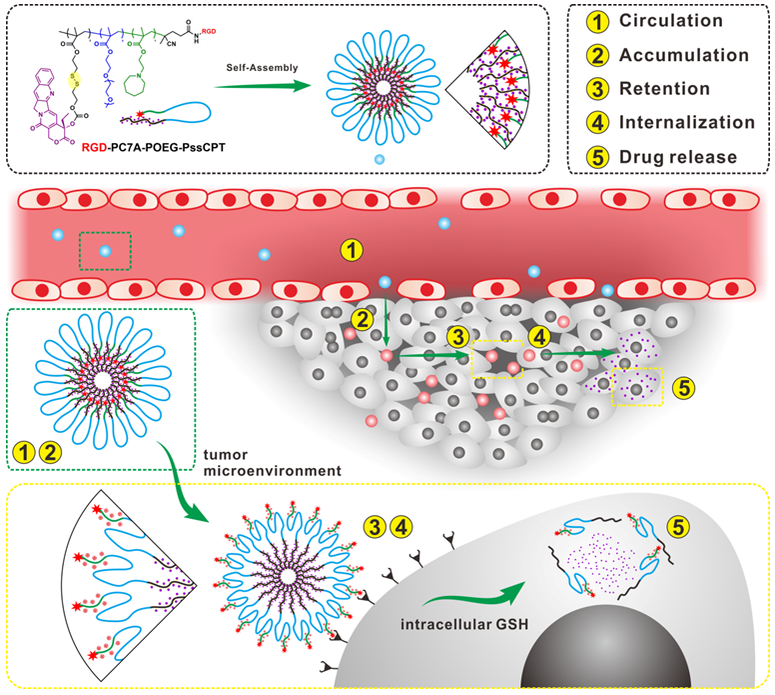Figure 1.

Schematic illustration of HRNMs for programmed CARIR chemotherapeutic delivery. The HRNMs show high stability in blood circulation (①) due to their nanoscale particle size and neutral POEG surface; therefore, they can effectively accumulate in the tumor via the EPR effect (②). In tumor microenvironment, acidic pH will cause charge conversion of the HRNMs and exposure of RGD peptides, permitting enhanced tumor retention (③) and cellular internalization (④). Thereafter, intracellular GSH will trigger CPT release for cancer chemotherapy (⑤).
